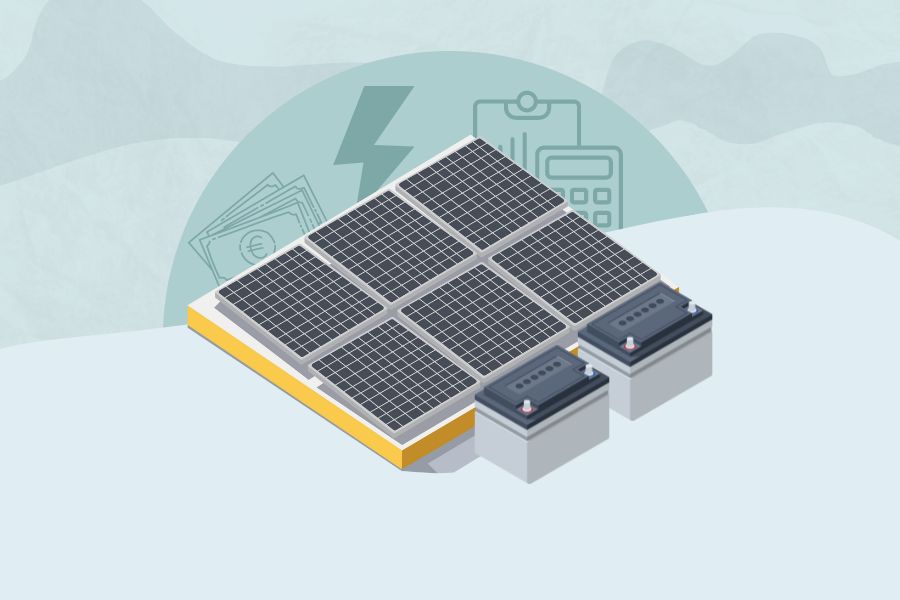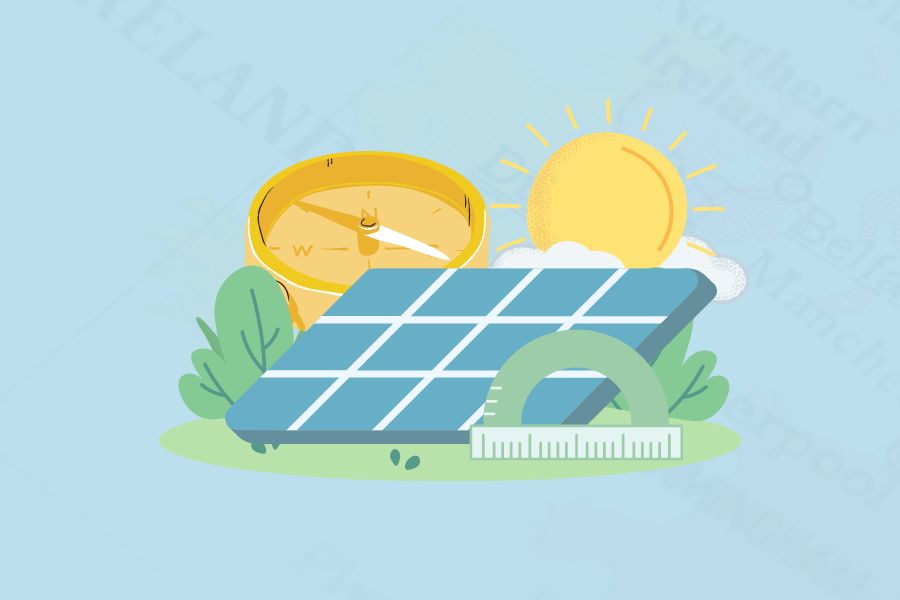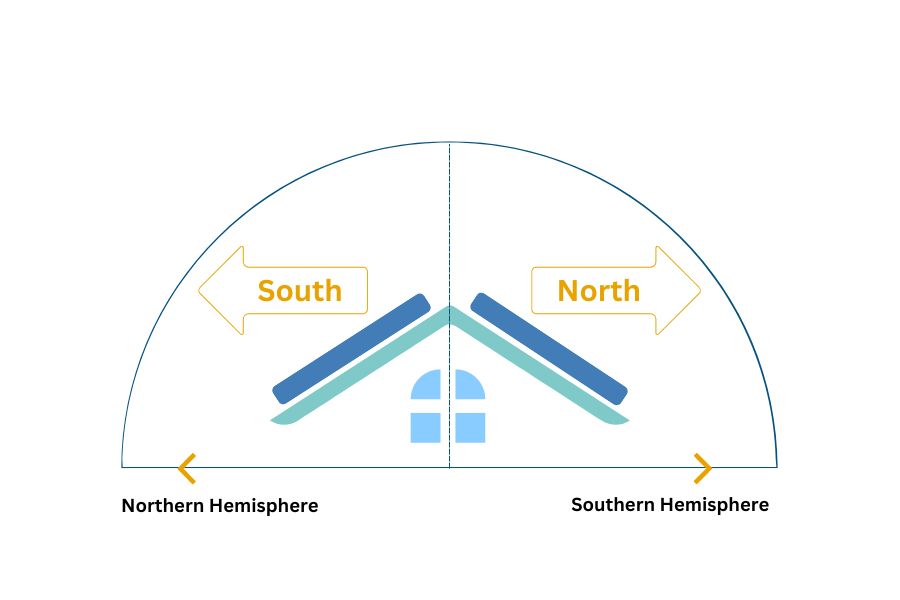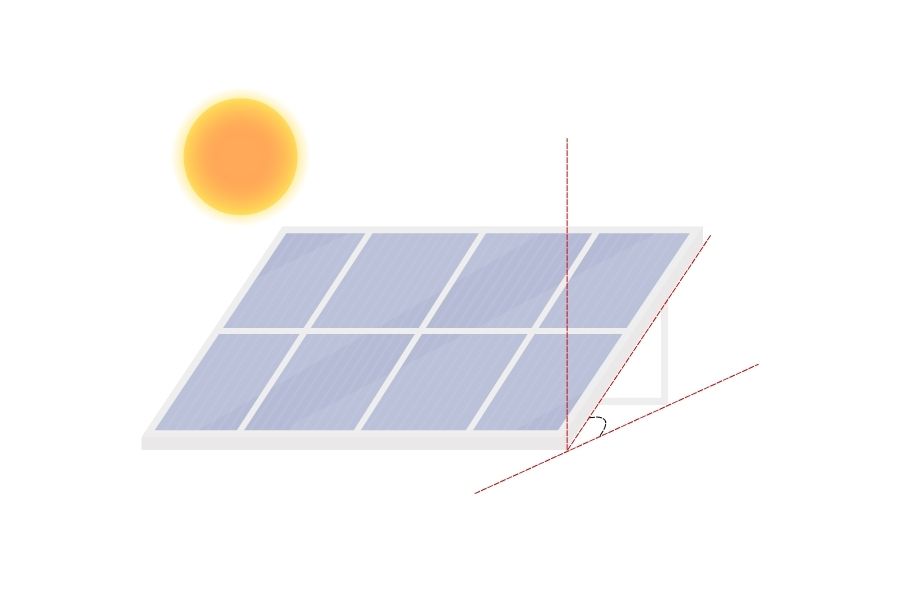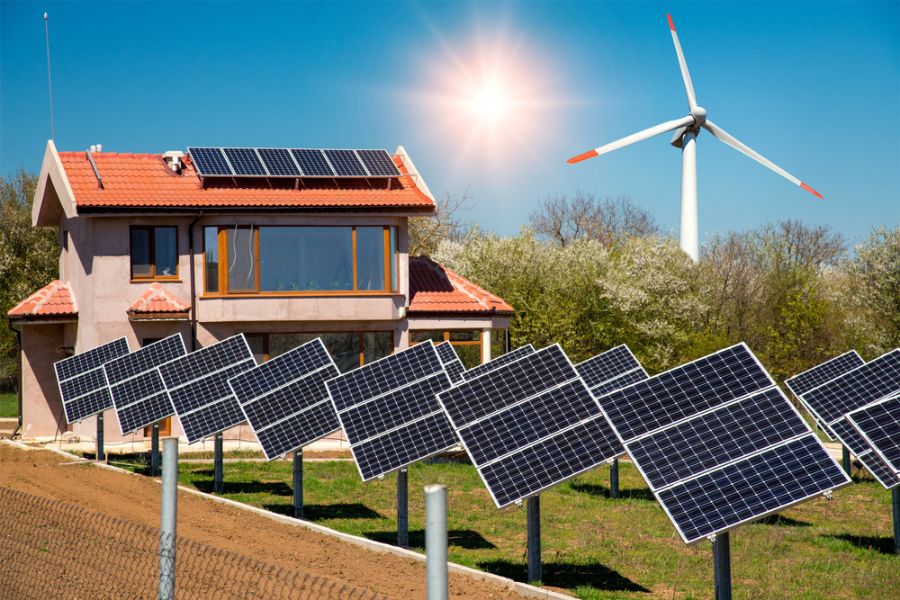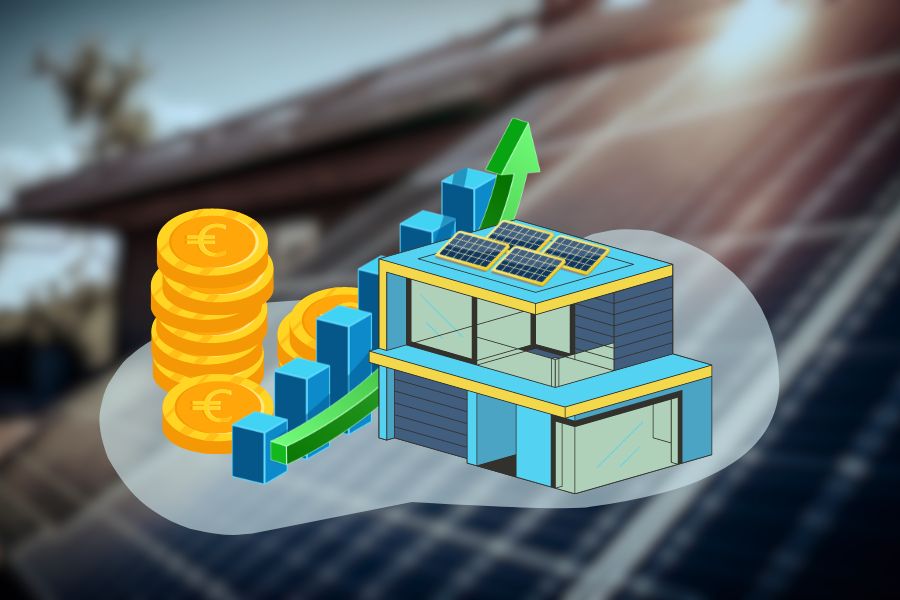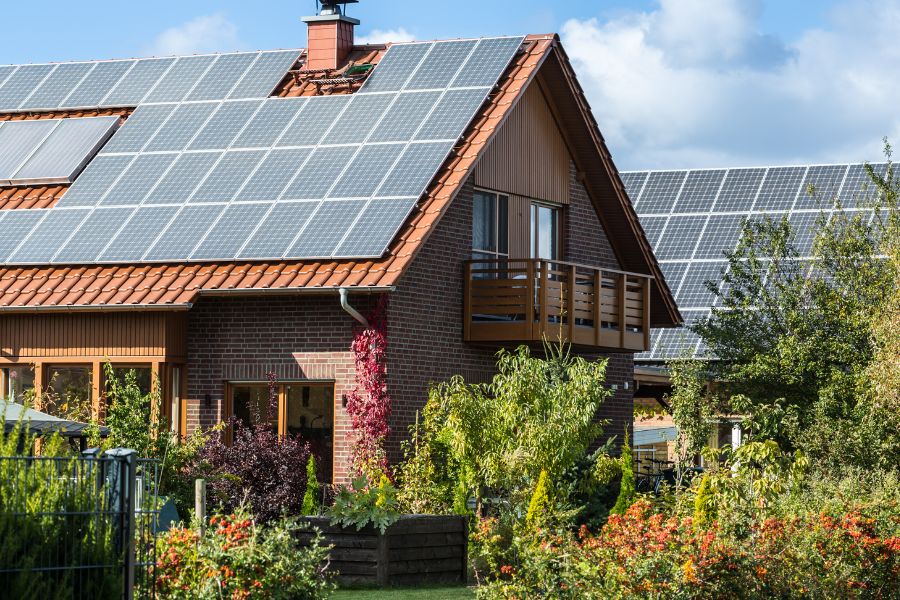Figuring out the number of solar panels you need in Ireland isn’t a one-size-fits-all answer – it’s like a tailored suit; it needs to fit your specific needs!
A research paper revealed that the Irish Government’s target is to finish 250,000 rooftop installations by 2030, which translates to approximately 1,800 installations per month.
However, one of the most common questions is, “How many solar panels do I need to power my property?” The answer to this question depends on several factors, including your energy consumption, the efficiency and output of the solar panels, the design and configuration of your solar panel system, and financial considerations.
Accurate calculations of these parameters can help determine the ideal number of panels for your needs, ensuring optimal energy production and the cost-effectiveness of your solar investment.
How Much Energy Are You Currently Using?

A typical Irish household’s average electricity consumption is around 4,200 kilowatt-hours (kWh) per year. To offset this amount, you would need a solar panel system with approximately 4 kilowatts (kW) capacity.
A solar power system array of 10 panels, each with an average size of 400 watts, would meet the electricity demands of a family living in a three-bedroom house. The total system size required would be 4 kW.
Furthermore, A 4 kW solar panel system typically consists of 12-16 panels and covers an area of approximately 28-40 square meters. However, the number of panels and the area required may vary depending on the installed solar energy system efficiency, the angle of the roof, and the amount of sunlight the roof receives.
We recommend you use a smart meter to ascertain the electricity your appliances consume, hourly or daily.
How Much Roof Space Do You Have?
The size of your roof plays a significant role in determining the number of solar panels you need in Ireland, regardless of your budget. If you have an average-sized house that requires a 4 kW solar panel system, you would need a minimum of 28 square meters of roof space.
Even if your roof appears spacious enough, you must consider potential obstacles, such as skylights and vents, that may limit your solar system placement options.
However, don’t be discouraged if you have a smaller roof, as smaller solar panel systems can still be a good option. Smaller systems tend to have less waste than larger ones, resulting in a lossless or waste-free system that allows for the full self-consumption of energy generated.
This not only feels good but also presents a great investment opportunity. So, it is crucial to assess how much roof space you have before deciding on the number of solar panels you require for your property.
Solar Panel Types and Panel Wattage
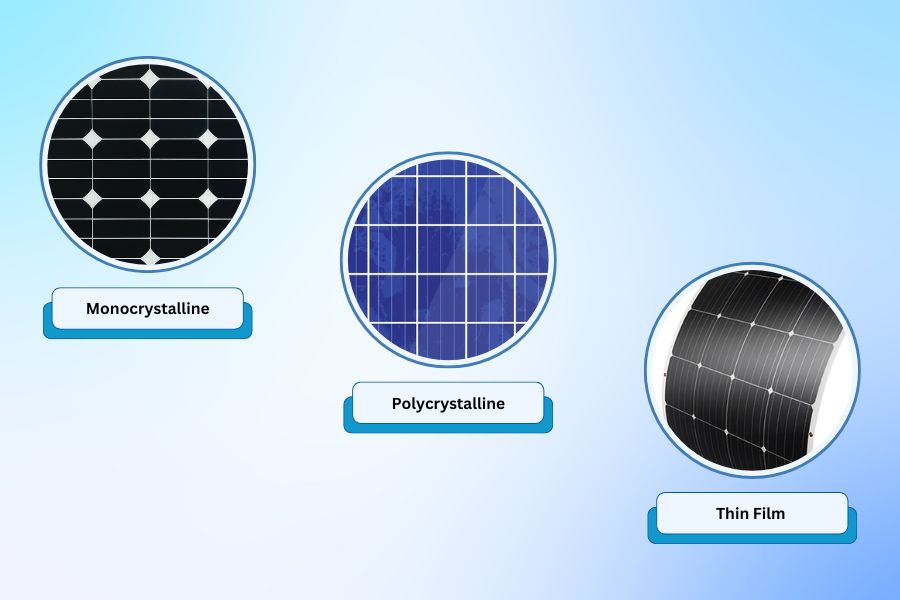
Solar panels come in different types and wattages. The most common types of solar PV panels are monocrystalline, polycrystalline, and thin film. Monocrystalline panels are the most efficient and expensive, followed by polycrystalline panels, while thin-film panels are the least efficient and cheapest.
The wattage of a solar panel refers to the amount of power it can generate. Generally, solar panels have a wattage ranging from 100 to 400 watts per panel, with the average size being 300 to 350 watts. The higher the wattage, the more power a panel can produce.
When choosing the type and wattage of solar panels, you must consider your specific needs, the size of your property, and your budget to ensure the solar panels work effectively. Monocrystalline panels are best for small rooftops with limited space, while polycrystalline and thin-film panels are suitable for larger rooftops.
Higher-wattage panels may be more expensive, but they can generate more power, benefiting homes with higher energy demands.
What About Solar Batteries?
When determining the number of solar panels needed in Ireland, it may be worth considering the additional cost of installing a solar battery system. While solar batteries can provide many benefits, they can also be expensive.
Although solar battery systems in Ireland can be expensive, costing between €1,500 to €4,000, it’s important to consider the potential long-term savings in energy costs they can provide.
The initial cost of installing a solar battery system may be offset by the money saved on energy bills over time, making it a worthwhile investment for many homeowners and businesses.
Furthermore, we recommend you check the size and capacity of the solar battery system. This will depend on the energy needs of the household or business and the amount of excess energy generated by the solar panels.
A professional installer can help determine the appropriate size and capacity of the solar battery system to meet energy needs and reduce electricity bills.
It’s also worth noting that the amount of sunlight in Ireland can vary significantly depending on the location, time of year, and weather conditions.
As a result, it’s important to consider the average sunlight hours in the area when calculating the energy generation of the solar panels and determining the number of panels needed.
How Many Solar Panels Do You Actually Need in Ireland
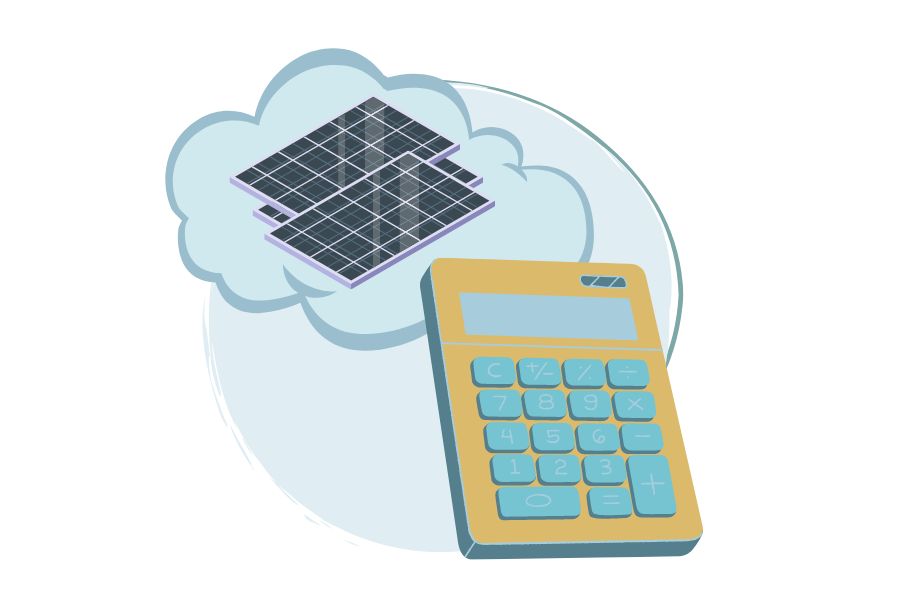
One approach to calculating the number of solar panels needed is to determine the amount of energy consumed by the household or business daily. This information can be obtained by reviewing past energy bills or using an online energy consumption calculator.
Next, it’s essential to consider the amount of sunlight available in the area. While Ireland may not have the ideal weather conditions for solar energy production, a significant amount of sunlight is available throughout the year. Ireland’s average annual sunlight hours can range from around 1,000 to 1,500, depending on the location.
For example, Let’s say a household in Dublin has an average daily energy consumption of 20 kilowatt-hours (kWh). The home also has a roof area of 50 square meters available for solar panel installation.
Based on the average annual sunlight hours in Dublin of around 1,300 hours per year, a professional solar installer may estimate that a single 300-watt solar panel can generate around 1.3 kWh of solar electricity per day.
To determine the number of solar panels needed, the installer can divide the daily energy consumption of 20 kWh by the estimated energy generation per panel of 1.3 kWh, resulting in approximately 15.4 panels.
However, since solar panels are typically sold in whole units, the installer may recommend installing either 15 or 16 panels, depending on the system’s budget and energy needs.
It’s important to note that this is just an example, and the actual number of solar panels needed will vary depending on the household or business’s specific energy needs and available roof area, as well as other factors such as solar panel efficiency and local regulations.
Energy Consumption Assessment
In Ireland, the average electricity usage for a household can vary depending on several factors, such as the number of occupants, the size of the property, and the type of appliances used.
According to the Commission for Regulation of Utilities, the average electricity usage for a household in Ireland is around 4,200 kWh per year.
For commercial properties, energy consumption can vary significantly depending on the size and type of business. For example, a small retail shop may consume less energy than a large office building or a manufacturing facility.
In these cases, a detailed energy audit may be necessary to determine the business’s energy needs accurately. It’s also important to consider seasonal variations in energy usage. In Ireland, energy usage tends to be higher during the winter months due to increased heating needs.
This can be especially true for commercial properties with higher heating requirements than residential ones. Understanding seasonal variations in energy usage can help with budgeting and planning for energy needs throughout the year.
System Design and Configuration
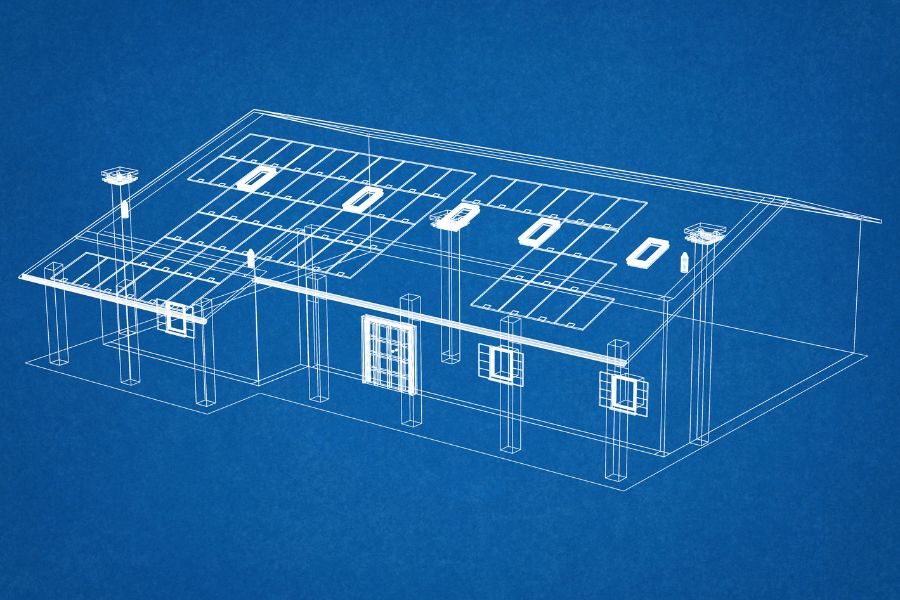
Once the energy needs of property in Ireland have been determined, the next step is designing a solar panel system to meet those needs. This involves considering factors such as available space, orientation and tilt angle of solar panels, and battery storage options.
The size and orientation of the roof space available for solar panel installation is an essential factor in determining the size and configuration of the solar panel system.
In Ireland, the optimal direction for solar panels is south-facing, as this direction receives the most sunlight throughout the day. However, solar panels can still be effective if installed facing east or west, as long as they receive sufficient sunlight.
The tilt angle of solar panels is also important to consider, as it affects the amount of sunlight the panels can capture. In Ireland, a tilt angle of around 30 degrees is recommended for solar panel installation. However, if the roof angle differs, a solar installer can adjust the panel mounting to optimize sunlight exposure.
Battery storage is another essential consideration in solar panel system design. While connecting a solar panel system directly to the grid is possible, adding battery storage can provide several benefits, such as energy independence for off-grid living and backup power during power outages.
When designing a solar panel system, working with a professional solar installer or energy consultant must ensure that the system is configured correctly and meets the property’s energy needs. The installer can also help obtain necessary permits and confirm that the system complies with local regulations.
Financial Considerations
Solar panels cost of installation in Ireland can vary depending on several factors, such as the size and complexity of the system, the type of panels used, and the labor cost. On average, the cost of installing a solar panel system in Ireland ranges from €5,000 to €10,000. However, the cost may be offset by the potential savings in energy costs over time.
The Irish government offers several incentives and grants for solar panel installations, such as the Better Energy Homes scheme and the SEAI Solar PV grant. This solar electricity grant will provide financial support for homeowners and businesses that install solar panels and can significantly reduce the upfront installation cost.
In addition to incentives and grants, solar panel installations can provide long-term savings on electricity bills. By generating their electricity from the sun, homeowners and businesses can reduce their dependence on grid-supplied electricity and save thousands of euros over the system’s lifespan.
It’s also worth noting that solar panel systems can increase the value of a property. According to a study by the Lawrence Berkeley National Laboratory, homes with solar panel systems sold for an average of 4.1% more than similar homes without solar panels.
Frequently Asked Questions
How Many Solar Panels Do I Need for a Family of 4?
The number of solar panels required for a family of 4 depends on several factors, including their energy consumption and the efficiency of the solar panels. However, on average, a typical home may need between 17 and 21 solar panels to generate enough electricity to meet its energy needs completely.
Is Solar Power Worth It in Ireland?
Yes, solar is worth it in Ireland and can provide several benefits including energy independence and potential savings on electricity bills.
How Much Does a 5KW Solar System Cost in Ireland?
On average, a 5kW solar system in Ireland can cost between €5,000 to €10,000
Is 5kW enough to run a house?
This depends on the house’s energy needs, but a 5kW solar system can provide a significant portion of a household’s electricity needs.
How Many Solar Panels Do I Need to Power a Refrigerator?
Powering an average refrigerator typically requires the energy generated by around three or four solar panels. In Ireland, an average refrigerator consumes about 57 kWh per month, and an average freezer uses 58 kWh.
Conclusion
As we wrap up this article, let’s take a moment to appreciate the sun’s power. By installing solar panels, you can save money on electricity bills, reduce your carbon footprint, and help create a cleaner, more sustainable future.
So, why not harness the sun’s energy and join the solar revolution? With the right number of solar panels and a little Irish luck, you’ll power your home with renewable energy in no time!
